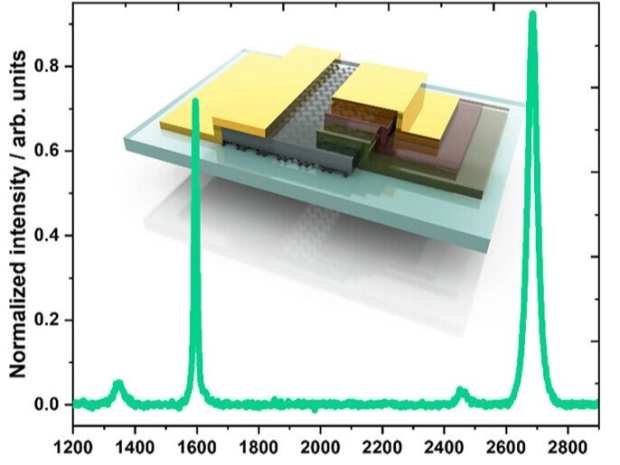This innovation, published in ACS Advanced Electronic Materials and featured on this month's cover, marks a crucial advancement towards scalable production of these devices, which are essential for non-volatile memory and artificial neural networks (ANNs).
Memristors are seen as game-changers in computing. They can perform analogue computations, store data without power, and mimic the synaptic functions of the human brain. Incorporating graphene, a material just one atom thick with the highest electron mobility known, can dramatically enhance these devices. However, integrating graphene into electronics at a large scale has been challenging until recently.
Queen Mary research scientist Dr Zhichao Weng said: "Graphene electrodes bring clear benefits to memristor technology. They offer improved endurance and exciting new applications, such as light-sensitive synapses and optically tunable memories."
One of the main challenges in developing memristors is device degradation, which graphene can help prevent. By blocking chemical pathways that degrade traditional electrodes, graphene could significantly extend the lifetime and reliability of these devices. Its remarkable transparency—transmitting 98 percent of light—opens doors to advanced computing applications, particularly in AI and optoelectronics.
This research represents a crucial step towards the scalability of graphene electronics. Producing high-quality graphene compatible with semiconductor processes has been a significant hurdle.
However, Paragraf's proprietary Metal-Organic Chemical Vapor Deposition (MOCVD) process now allows the growth of monolayer graphene directly on target substrates.
This scalable approach is already used in commercial devices, such as graphene-based Hall effect sensors and field-effect transistors (GFETs).
Paragraf CTO John Tingay: "The opportunity for graphene to help in creating next-generation computing devices that can combine logic and storage in new ways provides opportunities to solve the energy costs of training large language models in AI.”
"This latest development with Queen Mary University of London to deliver a memristor proof of concept is an important step in extending graphene's use in electronics from magnetic and molecular sensors to proving how it could be used in future logic and memory devices," adds Tingay.
The team used a multi-step photolithography process to pattern and integrate the graphene electrodes into memristors, producing reproducible results that suggest a path to large-scale production.
Electronic Materials at Queen Mary's School of Engineering and Materials Science Professor Oliver Fenwick said: "Our research establishes proof of concept and confirms graphene's suitability for enhancing memristor performance over other materials.”




